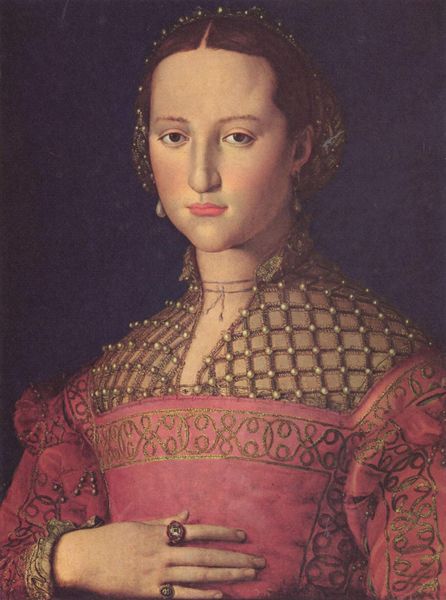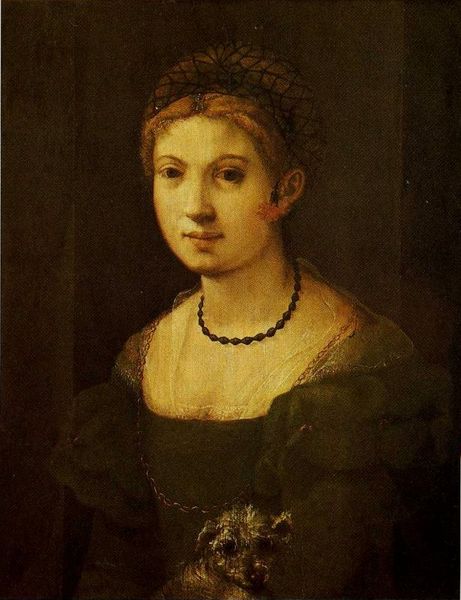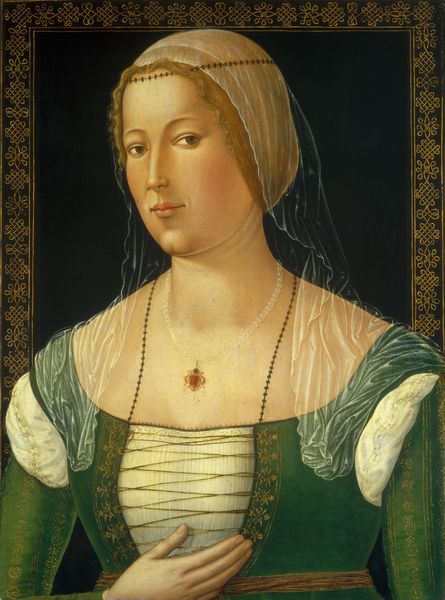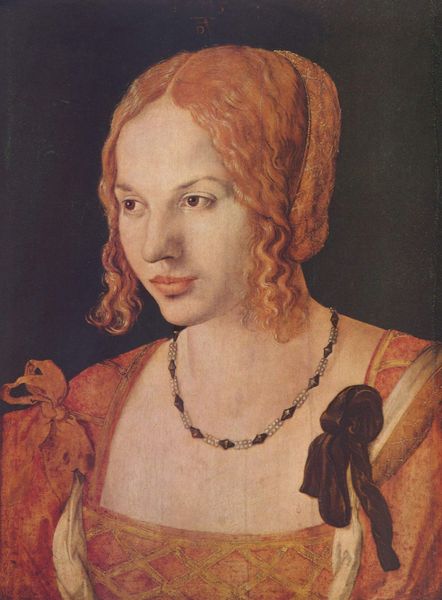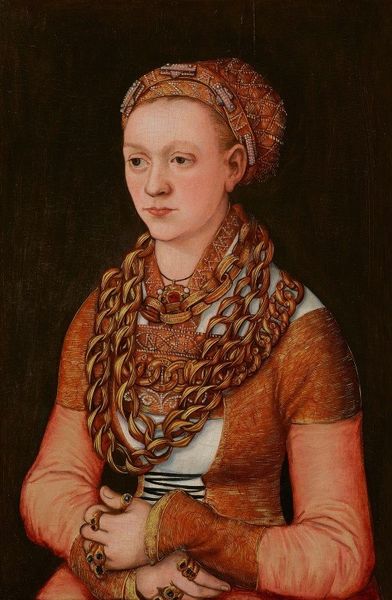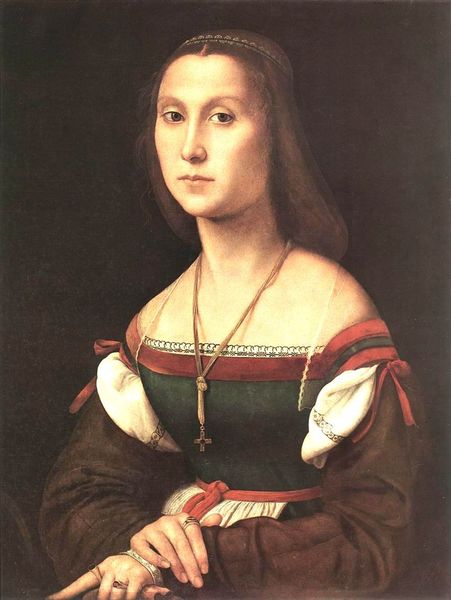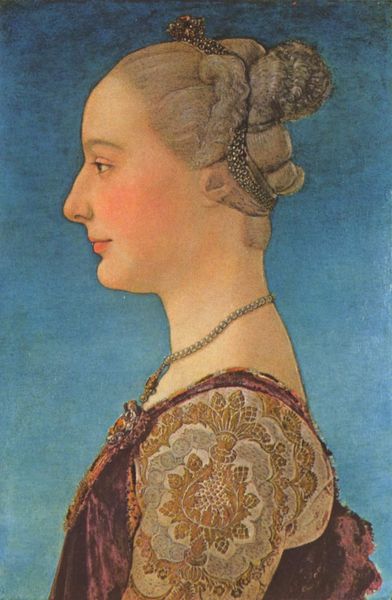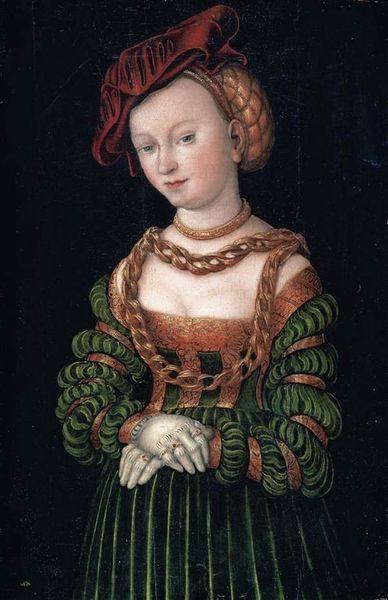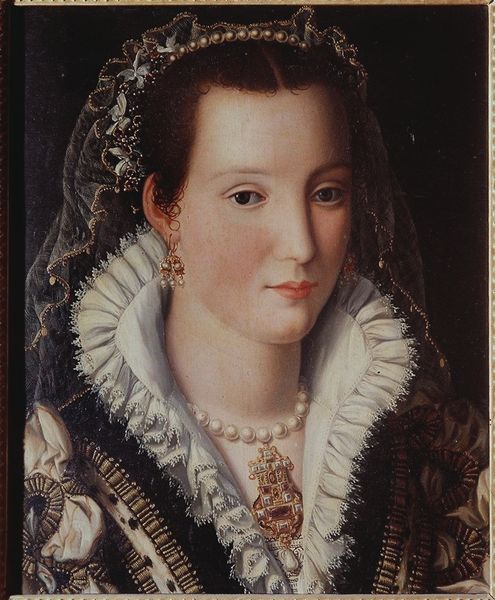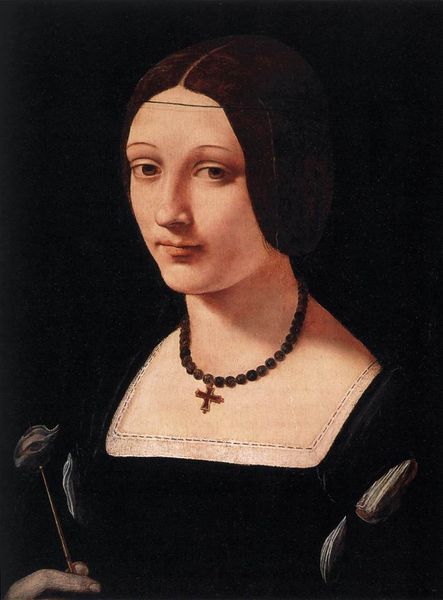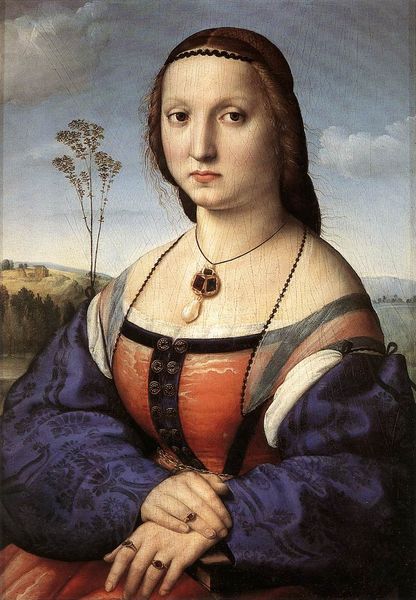
painting, oil-paint
#
portrait
#
painting
#
oil-paint
#
mannerism
#
italian-renaissance
Copyright: Public Domain: Artvee
Curator: Up next, we have Agnolo Bronzino’s portrait of Costanza Da Sommaia, an oil painting from around 1540, placing it firmly within the Italian Renaissance. Editor: There's a quiet intensity in her gaze; she really seems to hold back all of her feelings. And that blue velvet backdrop amplifies the whiteness of her face, which is so strange. It's as though it had been blanched. What a sensation of restraint and constraint! Curator: That sensation of restraint aligns perfectly with Bronzino’s artistic agenda and the prevailing societal expectations of noble women in his time. Looking closely, we can appreciate his meticulous process: thin glazes of oil paint were carefully layered. Bronzino achieves this effect with expensive materials. The lapis lazuli in the ultramarine blue pigment for the backdrop must have been costly at the time. Editor: Absolutely, we need to think of the institution surrounding it and the power relationships. Think of it as being exhibited as propaganda. This depiction exudes a sense of detached grandeur, a far cry from any emotional display. What are they attempting to convey to the public by displaying these carefully posed individuals? Curator: That grandeur wasn’t simply "displayed"; it was manufactured. Artists like Bronzino operated within a patronage system. Their work literally served the political agendas of wealthy families and the state. You see, in this portrait, not just the painting, but the materials themselves communicate wealth, the sitter's position and also her moral restraint as a product of her aristocratic education. Editor: True. It's almost as if the artwork performs this visual construction of dynastic image. This wasn't just about aesthetics, but power dynamics. It tells us so much about the museum itself—its collection and its commitment to showing and even recreating social, political and artistic contexts. Curator: Indeed. Reflecting on this portrait, I see a meticulous display of technical skill inextricably bound to the political landscape of Renaissance Italy. Editor: And for me, reflecting on its modern museum placement, I am reminded of art's enduring role in constructing narratives of power, beauty and the human experience, for better or worse.
Comments
No comments
Be the first to comment and join the conversation on the ultimate creative platform.



